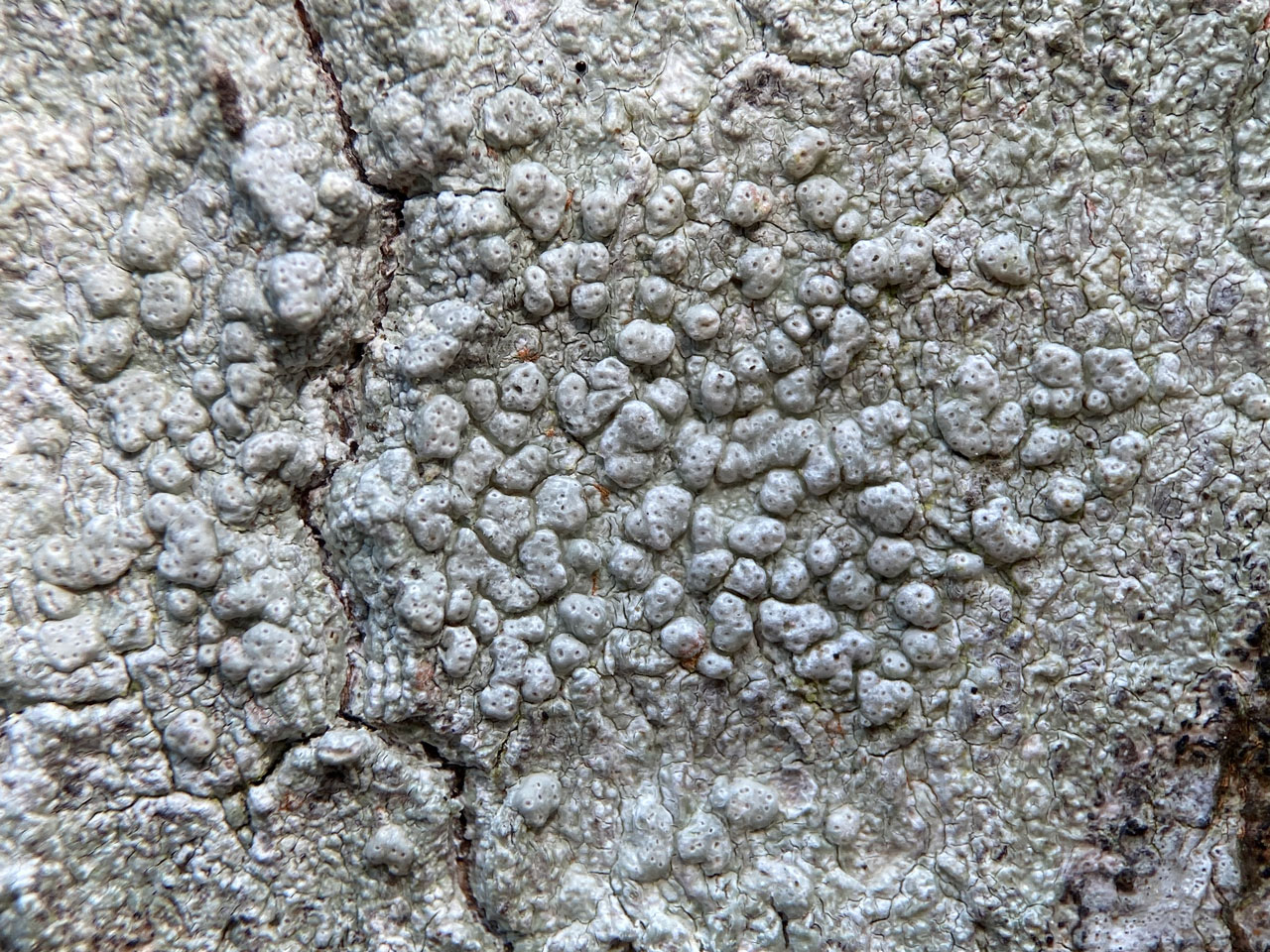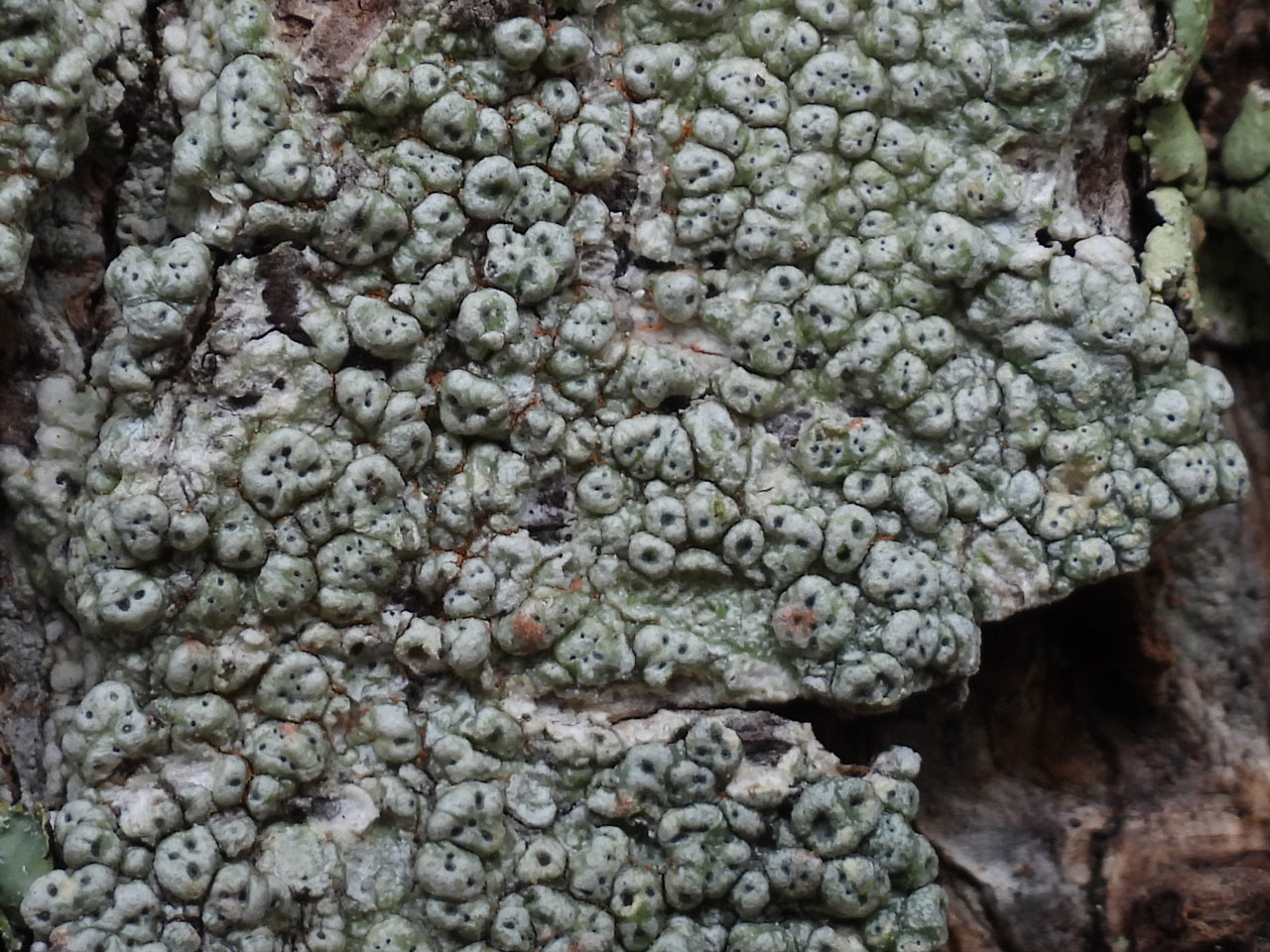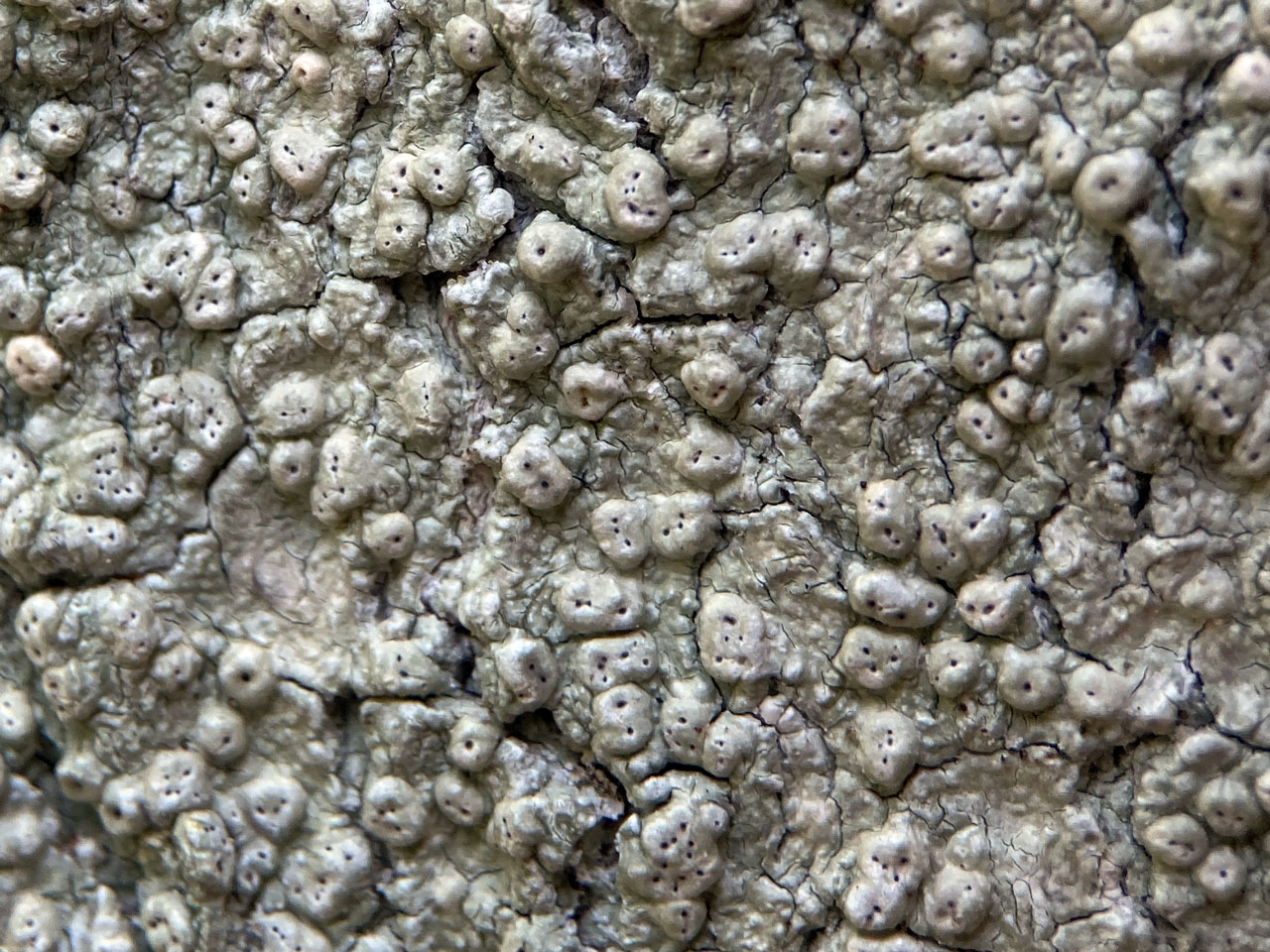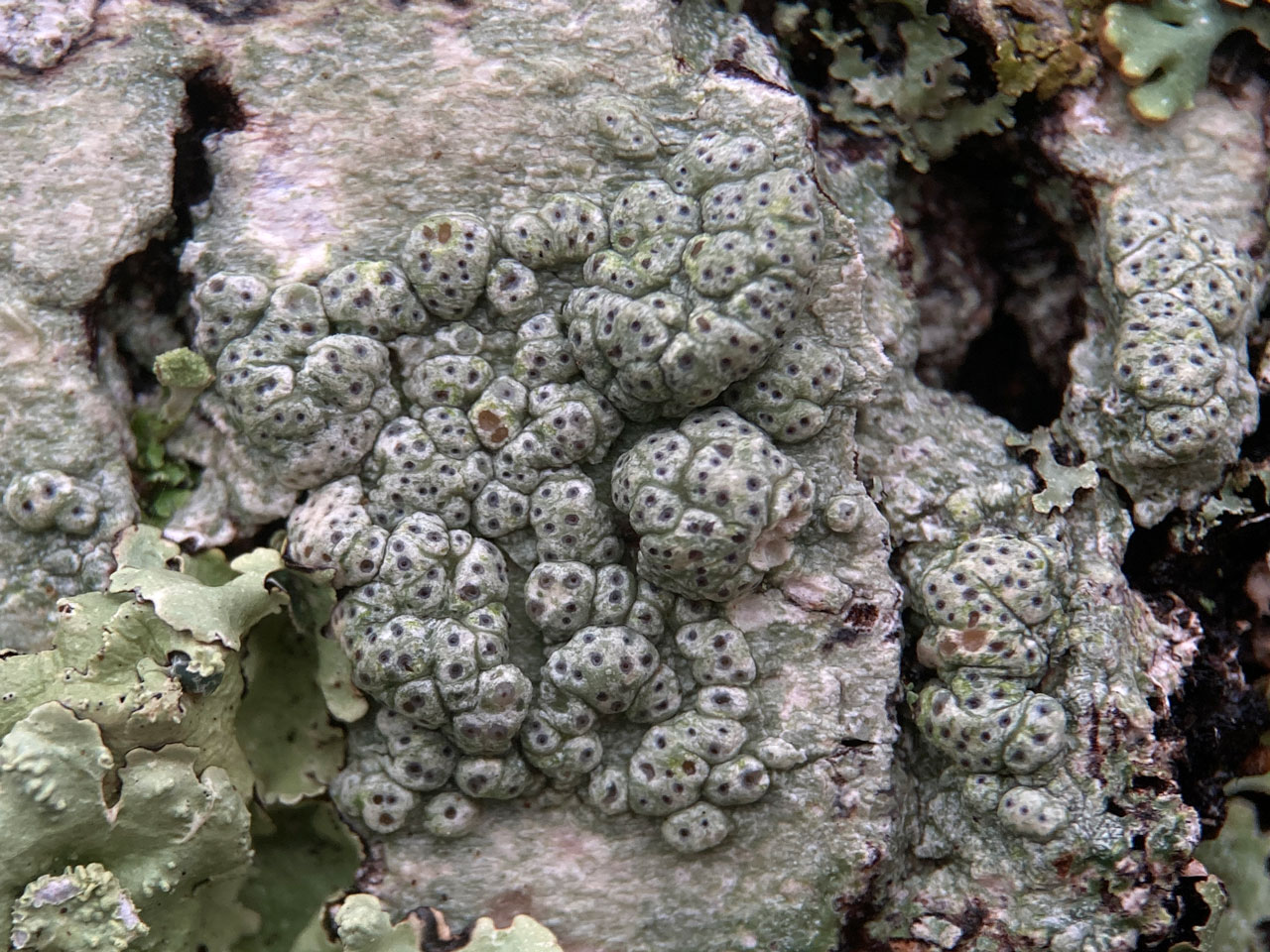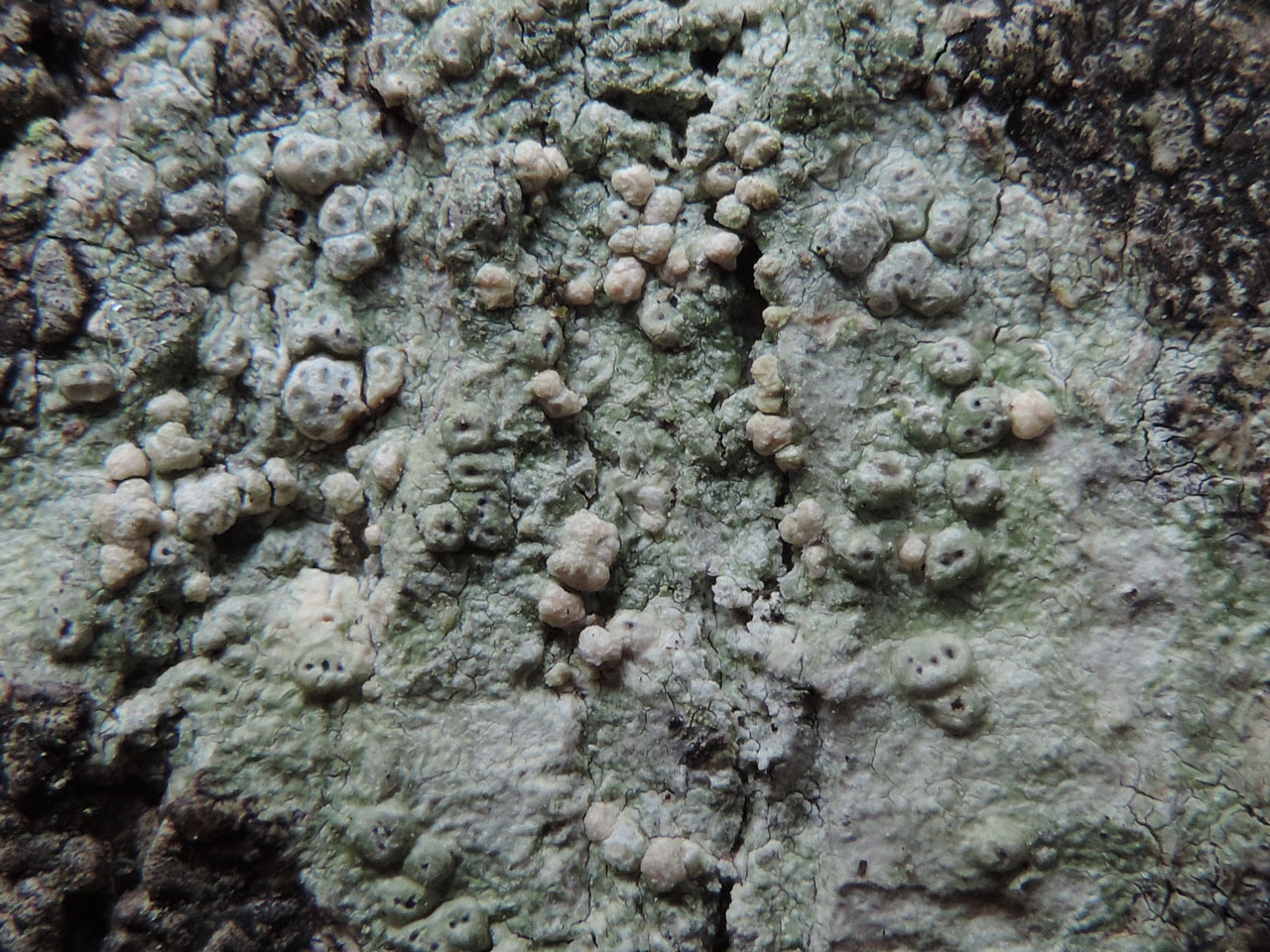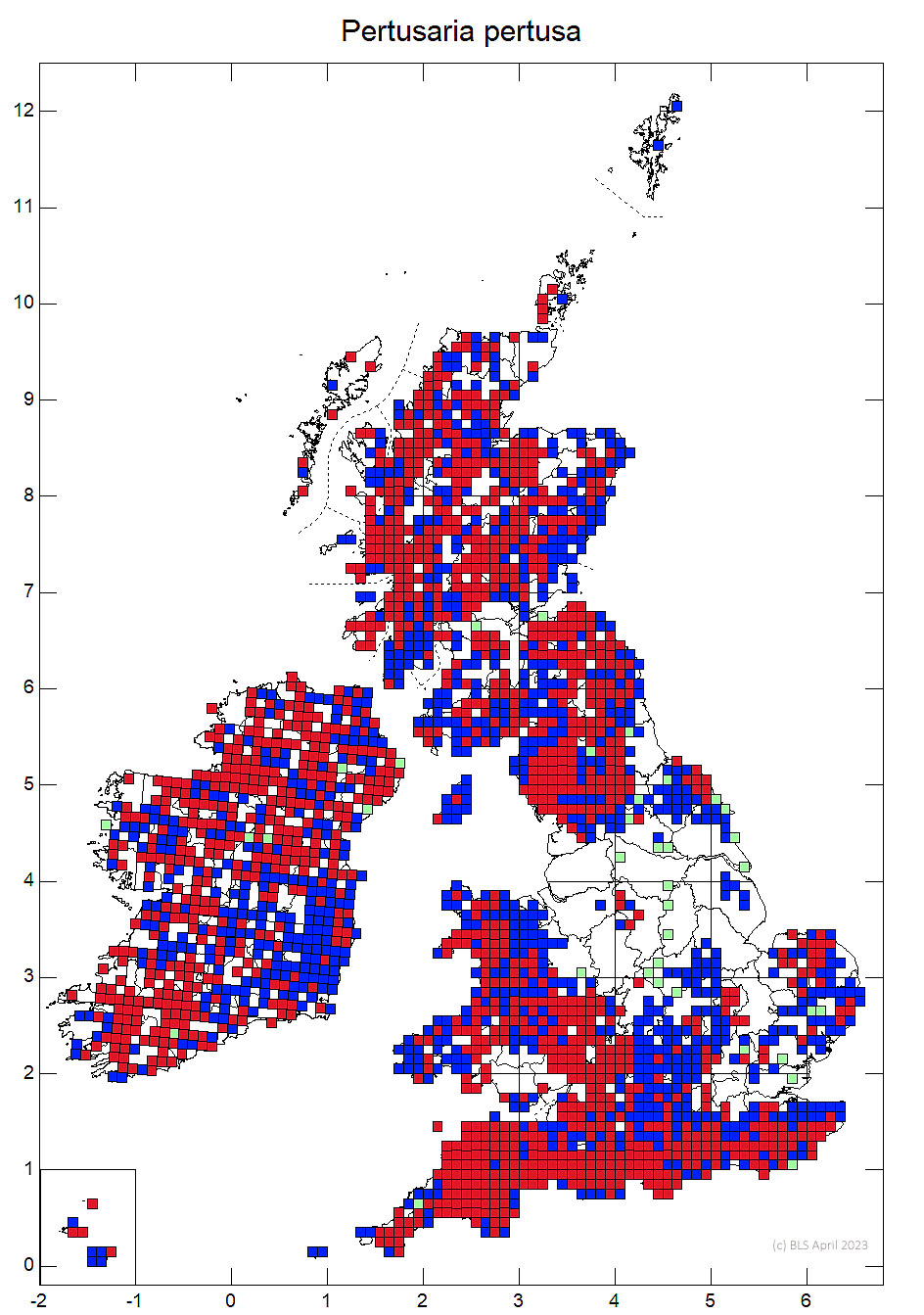A widespread and frequent epiphytic Pertusaria, with grey thallus with rounded, smooth fertile warts, each with several dark punctiform discs, resembling a pepper shaker. Often associated with Pertusaria hymenea, which has a darker grey thallus with fertile warts that have a single irregular opening.
Thallus thin to thick; prothallus sometimes distinct, pale to white, limiting; upper surface pale grey to greenish grey, ± shiny, smooth or sparingly rimose, uneven, wrinkled or warted. Fertile warts 0.8–2 (–3) mm diam., often abundant, scattered to crowded, typically irregularly semiglobose, constricted at the base and with a slightly flattened apex; apothecia (1-) 4-7 (-15) per wart, immersed; disc black, punctiform. Asci 2(-4)- spored. Ascospores (120–) 145–230 (–330) × (35–) 40–80 (–90) μm; wall 7–15 μm thick, ends to less than 30 μm thick. Conidia 12–18 × 0.5 μm, acicular. Thallus C–, K+ yellow or yellow–orange, KC+ yellow, K/UV (wet)+ pale yellow, Pd+ orange- red, UV± pale orange (coronaton, stictic acid, ± norstictic and ± constictic acids).
The combination of well-developed irregularly semi-globose fertile warts with constricted bases, each containing several apothecia, 2-spored asci, and presence of coronaton and stictic acid is distinctive. Pertusaria hymenea differs in the 8-spored asci, a K+ violet epithecium, fewer apothecia (often only one) per wart, wider discs and different chemistry (useful spot tests for P. hymenea are C+ yellow & K/UV (wet)+ bright yellow-green). P. leioplaca, with similar chemistry to P. pertusa has 4-spored asci and ± evenly spaced, conical warts containing a single apothecium.
Host to several species of lichenicolous fungi, viz. Cornutispora ciliata Kalb (1993), C. triangularis Diederich & Etayo (1995), Pronectria pertusariicola Lowen (1999), Sphinctrina leucopoda Nyl. (1860) and S. turbinata.; also Lichenoconium erodens, Lichenodiplis pertusariicola, Marchandiomyces corallinus, Sclerococcum parasiticum (Dactylospora parasiticum), Tremella pertusae, and an undescribed species of Roselliniella.
On smooth to rough bark, more rarely on rocks, especially old walls. A characteristic species of the Mature Mesic Bark Community (Pertusarietum amarae).

Common, throughout Britain & Ireland, except in formerly heavily polluted areas.
Cannon, P., Chambers, S., Coppins, B., Sanderson, N. & Simkin, J. (2021). Pertusariales: Pertusariaceae, including the genus Pertusaria. Revisions of British and Irish Lichens 6: 1-12.
Text by Neil A Sanderson based on Cannon et al (2021)
